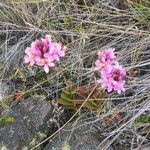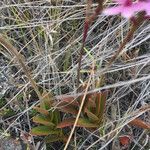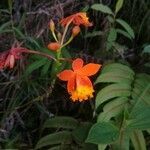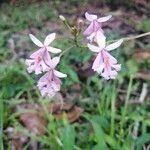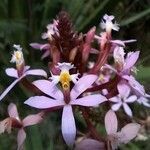Plants forming erect clumps with new growth arising from the base. Stems cane-like, erect, branched, with basal roots, leafy throughout, often forming aerial growths near apex (just below inflorescence). Leaves 60–100 × 10–20 mm, oblong to elliptic, fleshy, green or yellowish green. Racemes terminal, 200–400 mm long, with a long basal stalk, multiflowered. Flowers 20–30 mm across, resupinate, crowded in a terminal group, varied in colour (mauve, red, orange, yellow). Labellum projected forwards, crucifix-like with three fringed or lacerate lobes.
